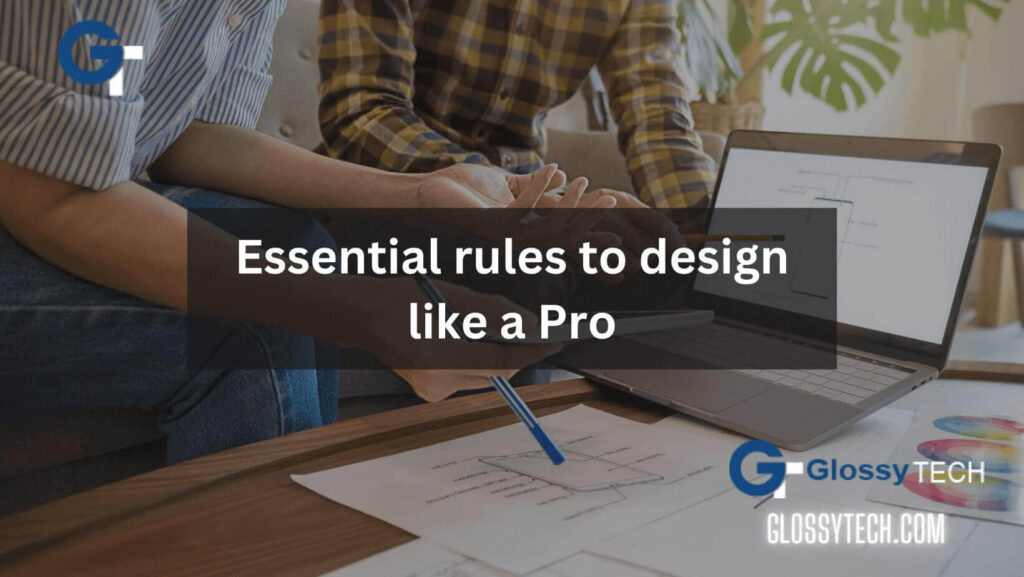graphic designer about
Being a graphic designer isn’t easy. It’s a tough, competitive industry, and it can be difficult to get a job. You need to be creative and good at what you do to succeed in this field. To do that, you’ll need to be more than just good at design. You’ll need to be able to write, speak and work well in a team setting.
As a graphic designer on any platform like Fiverr or Upwork, you need to know what should and should not be acceptable in your field. For your own sanity and for the sake of your clients, you should always follow these rules.
Luckily, this article has it all covered. Here are some of the best essential rules every graphic designer should follow.

graphic designer about
1. Focus
As everyone said at school, concentration is very important. A key element of good composition is a strong focus which also helps the viewer’s eye focus first on the important parts of the design.
If you need to accommodate multiple design elements in a layout then you should definitely keep the focus of your design in mind. Start your design by first thinking about what the focus should be or where the font should be.
When choosing a focus, remember that the primary goal of design is communication. Design tells a specific story, whether it conveys ideas, information, or feelings and emotions. So choose a focal point that helps tell that story most powerfully and effectively.
2. Balance
When arranging your design elements, make sure the balance of the overall composition is maintained. “Balance” basically means nothing more than achieving a balanced interaction of your design elements. If your design is well-balanced in a visual way, it will look much more harmonious to the viewer.
Balance is very important in so many ways but how do you find the perfect balance in your design?
Let’s take a look at two common types of balance and how to master them.
- First, a symmetrical equilibrium holds. Symmetrical balance does what it says on the tin – it balances your design symmetrically. Mirroring certain design elements from left to right or top to bottom also creates a strong sense of balance.
- Another type of balance, perhaps more common, is the asymmetric balance. Asymmetrical balance is also a self-explanatory term, as it is all about creating asymmetrical balance.
3. 60-30-10 Rule
Once you know what your desired colour palette is, you need to know what role it plays in your overall scheme. This rule means choosing a dominant colour, a secondary colour, and an accent colour.
Like if you are designing a room then this dominant colour should occupy 60% of the space and should be reasonably neutral. Secondary colours are usually bolder and can be used for furniture that covers 30% of the room and the remaining 10% are accent colours that will be used for the pillows, rugs, throws, and accessories.
4. KISS – Keep it simple and silly
Yes, you need to understand this KISS concept to perfect your design. Your work can do a great job of conveying the essence of your message and ideas to your audience. A crisp image is more legible than an image full of text and graphics.
Adding some silliness to your design makes it more stylish. Stupidity allows you to think outside the box. So you can easily start working out of the box and achieve amazing outputs.
5. Contrast
The use of contrast can give your design a certain amount of tension to the viewer. This is why the use of contrast elements is an essential stylistic device in graphic design. Like balance, contrast can be created in many ways. For example, let’s look at her three variations of the most commonly used contrasts.
- Colours: Creating contrasting colours is one of the easiest ways to catch the eye of your design. A popular classic is a contrast between black and white. However, using complementary colours or juxtaposing lighter and darker tones can also yield interesting results in your design.
- Proportions: The varying proportions of individual design elements also create exciting contrasts and Combining large design elements with a few smaller ones creates a special dynamic that draws the viewer’s attention directly to your design.
- Shapes: Plus, opposite and contrasting shapes are another way to add some excitement to your design. For example, when you are going to design a logo, you should experiment with different shapes to see how the contrast changes with different combinations of design elements. You’ll be amazed at what’s possible with the clever combination of different shapes.
6. Use creative fonts
Fonts play a very important role in capturing and retaining your audience’s attention. Smart artists know this all too well, so they play around with TYPOGRAPHY to make the most of what later turns out to be important. You can also do the same by using creative fonts.
A simple font can do a lot because it adds value. because fonts, font sizes, and other factors should be balanced.
“Typography plays an important role in design because it can grab the viewer’s attention without graphics.
7. Repeat Elements of Design
Last but not least, repetition is one of the imperative points that should not be missed. It is a factor in multi-page layouts. Repeating layout and design elements make each page flow to the next, creating a cohesive set of pages.
Repeat after me: “Repetition creates a good composition.”
Try to apply it to your section. You can apply font styles to multiple sections of your design and use graphics multiple times. So try to tie your design with repeating elements.
graphic designer about
Conclusion
In the final analysis, the above key points are the best pack points available to get a perfect, balanced and proper layout. Missing even one will throw off the balance and completely ruin your layout.
Every graphic designer should follow to ensure that they are doing their job to the best of their abilities.
graphic designer about
Some articles personally selected for further reading:
- Earn money online from Instagram || 100% authentic method.
- Freelancing tips to help you go from “struggling”
- Start freelancing as a graphic designer || Professionally
- Top Graphic Designer Jobs You Must Explore
- Never, Ever Make These Freelance Graphic Design Mistakes
- Low competition gigs on Fiverr in Pakistan
- Guide For Beginners to Start Freelancing From Zero
graphic designer about
Help someone in the comments by adding more suggestions 👇

